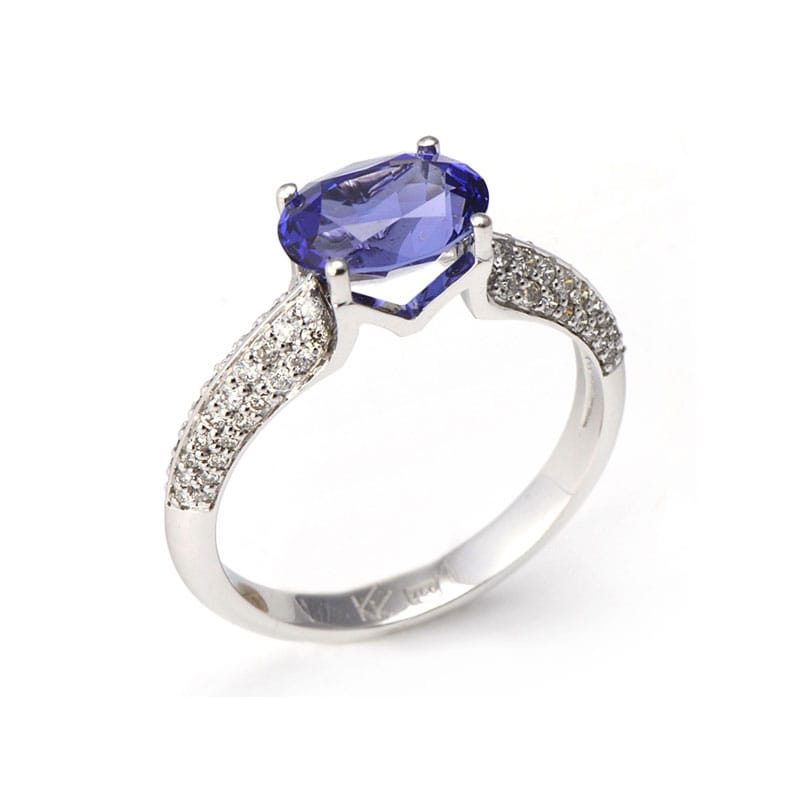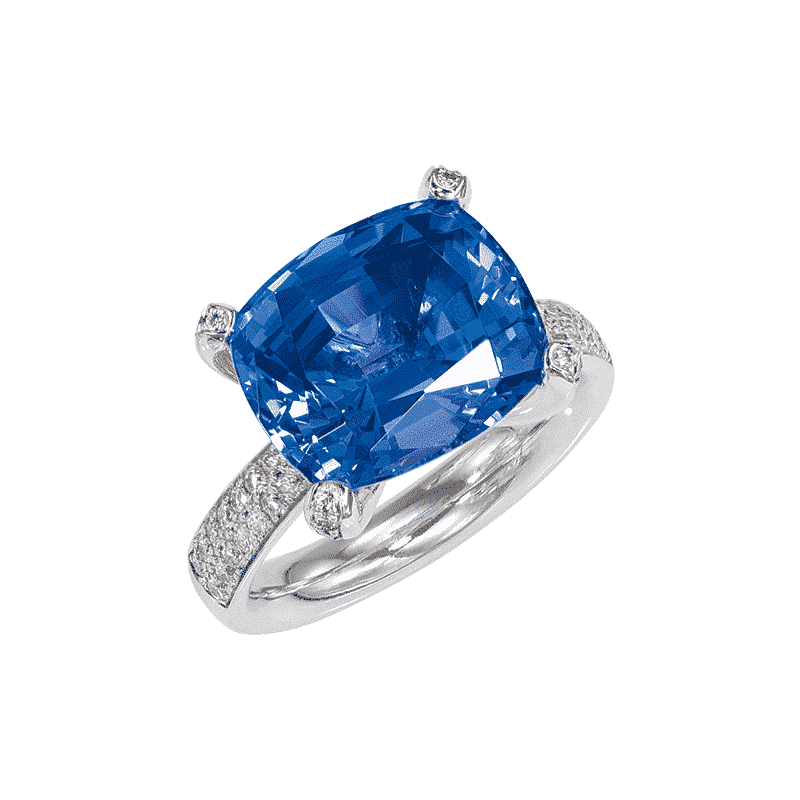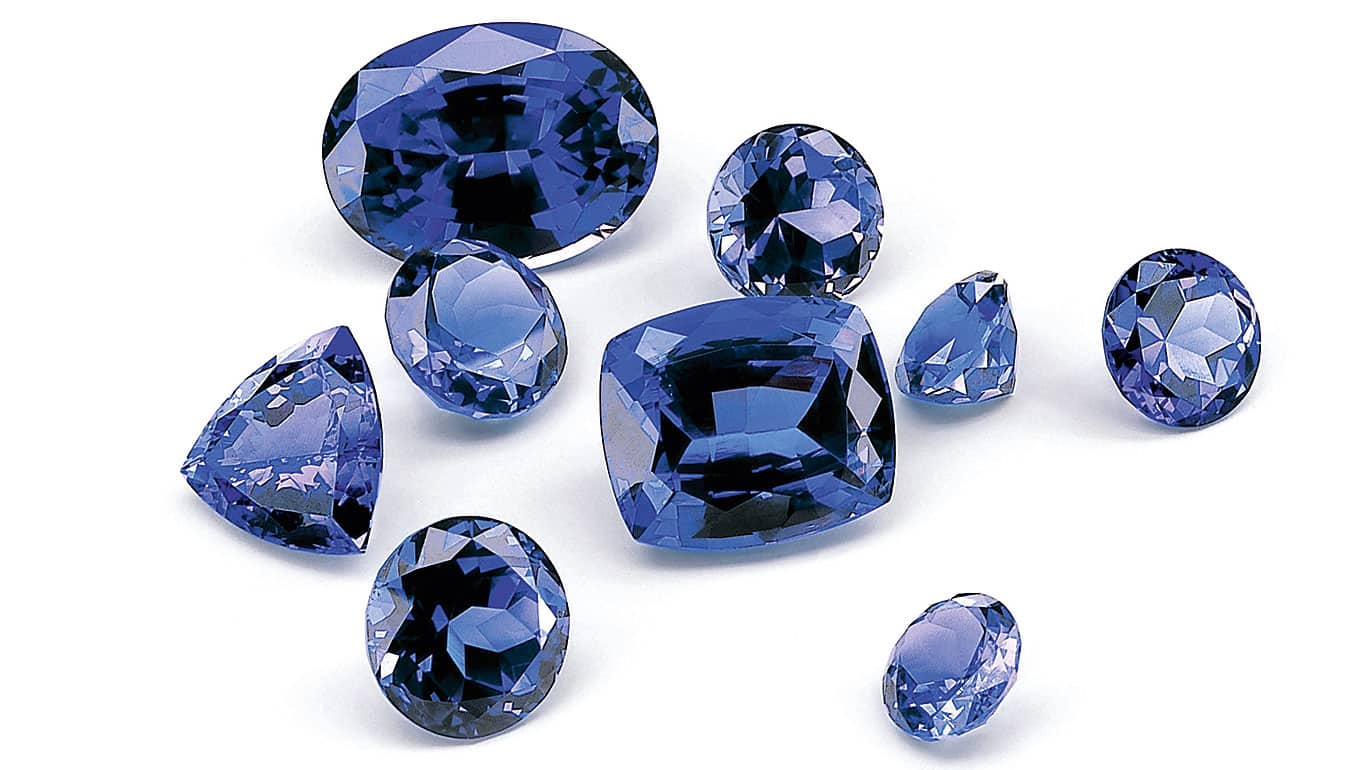Its discovery is a veritable poem. Whether romanticised legend or true story, the first tanzanite is said to have been discovered after a storm on the hills that stretch along the legendary Kilimanjaro range. Emerging from the caves in which they had sought refuge from the violent skies, the Masai herdsmen found a number of blue stones littering the ground. A considerable treasure that in just a few decades was to change the economic face of the region around Arusha, a small town in the north of Tanzania bordering the Kenyan frontier and the eternal snows of Kilimanjaro.

While today Arusha is known to the world because it attracts safari enthusiasts, the jewellery world shivers at the mention of the fine bluish stone which appeared less than 50 years ago. A stone that one might compare to Paraiba tourmalines, a type of gemstone that no longer exists, and which is increasingly sought after. Often cushion cut, it blends wonderfully well with gold of every colour. Aside from its extraordinary hue that unceasingly captivates jewellery enthusiasts, its hardness and resistance make it an ideal stone for all sorts of creations.

More information about this Lionel Meylan Créations here
A small tanzanite glossary
Pleochroism
Tanzanite is characterised by powerful pleochroism, or an important capacity to absorb different colours depending on the angle of the lighting. In more concrete terms, tanzanite has the fascinating particularity of appearing blue lengthways and violet widthways.
Rareté
The tanzanite deposit discovered in 1967 is the one and only mine of this fine stone. Until when? Nobody knows. Its small size – just 20 square kilometres – explains the rarity of this gem.
Value
The impending scarcity of tanzanite remains the main explanation for its price spike. Today, one carat of tanzanite costs 20 times more than in the 1970s. And, if the experts are to be believed, the upward spiral is not yet over.
Masai
Following the discovery of the tanzanite deposit, the face of the town of Arusha and this northern Tanzanian region has been literally transformed. The local populations have acquired a solid background with regard to cutting and gemmology that has enabled them to benefit from the economic outcomes of this fascinating discovery. It is thought that today 95% of tanzanite trade is in Masai hands.

